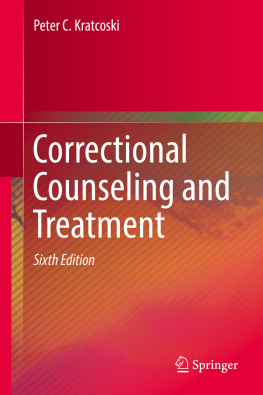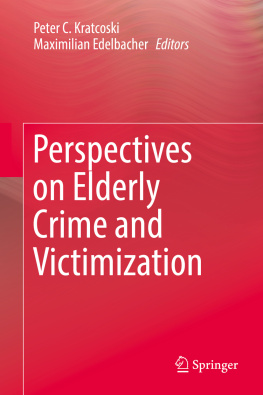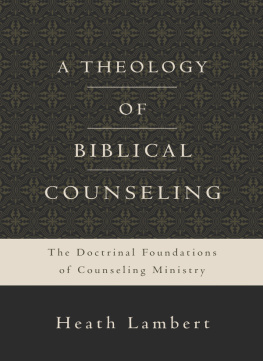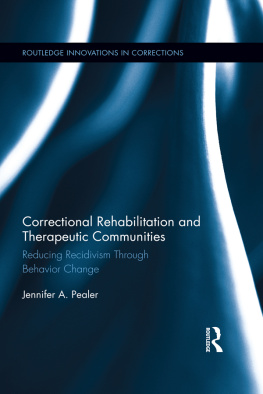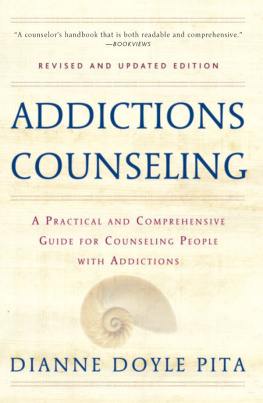In this part, the history of correctional treatment is reviewed and the economic, social, and political factors that had an influence on the way the criminal justice system responded to those who commit criminal offenses are explored.
In Chap. , the goals of correctional treatment and the techniques used to assist correctional workers in the achievement of the goals are delineated. These goals are broadly defined in terms of assisting the offender in establishing a lifestyle that is personally satisfying and conforms to the rules and regulations of society and protecting the community from the harmful activity of offenders. The models of treatment that have been utilized to punish and rehabilitate criminal and delinquent offenders are explained. The medical model, with its concentration on treatment, that was emphasized during the 1960s gave way to the just deserts model and the justice model during the 1970s, as the crime rates and fear of crime increased and crime control became a theme used by politicians seeking election to political offices. The change in emphasis was reflected in the passage of new laws that provided for mandatory prison sentences for certain categories of offenses and a de-emphasis on providing treatment programs in prisons and in community corrections. In the late 1990s and up to the present time, a different model, referred to as the restorative Justice model, gained much support from criminal justice personnel and legislators. This approach combines the treatment and punishment models.
In Chap. , the restorative justice model is explained. Under this model, the criminal offender, the victim, and the community are involved in the offenders rehabilitation process. The offender is held responsible for the harm caused to an individual or the community and must compensate for the crime in some way, either through monetary payback or service to the community.
The restorative justice movement in the United States was the result of a number of factors, including the realization that neither the punishment oriented models nor the treatment oriented models by themselves produced the results desired.
The restorative justice model attempts to provide a balance between the needs of the victim, the needs of the offender, and the needs of the community.
Several of the programs used in restorative justice include mediation, compensation, restitution, and family group counseling. These approaches to balancing the treatment and punishment given to offender are grounded in-evidence-based programs.
In Chap. , the emergence of victims of crime as a key component of the criminal justice process is explored. The movement toward assisting victims of crime and guaranteeing rights for victims of crime is closely tied in with other movements that occurred in the United States during the latter half of the twentieth century.
As the mass media drew attention to the inequalities of the justice system, the needs of minorities, women, children, and other groups, the victims of crime gained attention. Federal and state legislation passed in the 1970s and during later years provided funding for the implementation of victim services programs and also provided opportunities for the victims of crime to take an active part in the criminal justice process, rather than merely fulfilling their tradition role of being witnesses.
1. The Scope and Purposes of Correctional Treatment
Introduction
This book is designed to present and describe some of the counseling and treatment techniques that are available to assist correctional workers in accomplishing the goals they have established for their work. These goals are broadly defined as (1) to assist the offender in establishing a lifestyle that is personally satisfying and conforms to the rules and regulations of society and (2) to protect the community from harmful activity by offenders placed under correctional workers supervision. These dual demands of correctional workto provide assistance, counseling, and treatment and, at the same time, to act in a manner that will minimize the offenders threat to the communityare present for correctional workers who serve as youth counselors, correctional officers , probation officers, juvenile aftercare supervisors, parole officers , social workers, psychologists, or coordinators of educational or employment programs.
Definitions of Corrections , Counseling, Treatment, and Rehabilitation
The concepts corrections, counseling, treatment, and rehabilitation can assume different meanings, depending on the context in which the terms are being used and the person who is using the terms. In the most general sense, the term correction refers to changing a mistake made by another. For example, a student may correct a professor who provides information on a subject that the student knows to be false, or a newspaper reporter who wrote a story about a person or event before carefully obtaining the facts may later have to retract false information in the story. As with the concept corrections, the term treatment can convey many different meanings. For example, if prison inmates were asked if they were given any treatment, they might think of the times they were intimidated, shunned by other inmates, or harassed by correctional officers. The administrator of a correctional facility might think of treatment in terms of any type of planned activity that is used to maintain security and control of the inmates. Those employed in an institution may have different perceptions of treatment, based on their positions and duties. Correctional workers within the same institution may consider methods used to maintain order and control over the inmates as a form of treatment, while a professional social worker or psychologist is likely to define treatment in terms of specific planned intervention techniques that are used to bring about the desired changes in the behavior of the inmates. In this sense, the treatment is being given by a person who has been trained in administering treatment modalities. The term counseling can also take on a variety of meanings and must be interpreted within a specific context. In a general sense, to counsel is to give advice or to provide some information that will assist the person being counseled in making a decision on working out a problem. A counselor does not have to be professionally trained. For example, a parent giving advice to a child or a friend providing a person some advice on the course of action to take in trying to solve a problem is providing counseling. Within the field of corrections, counseling and treatment are very closely related. Counseling of some type may be employed as one of the treatment modalities used in the correctional process.
Generally, counseling and treatment are not guaranteed as rights to those accused of a criminal offense or those convicted of a criminal offense. However, there are exceptions. For example, a person accused of a crime who is destitute and cannot afford an attorney is guaranteed the right to have appointed counsel . If the accused is suspected of being mentally ill or incompetent, the state must provide a psychologist or psychiatrist to conduct an evaluation to determine if the person has the mental capacity to distinguish between right and wrong. In the examples given above, the counseling and treatment being provided do not specifically focus on the correction of the persons behavior. However, it is important to note that some form of counseling and treatment may be employed throughout the criminal justice process, and, as will be shown in later chapters, even those who are diverted out of the official justice system may be required to engage in some form of counseling and treatment, such as being required to perform community service or engage in drug or alcohol counseling as part of their official sanction .

